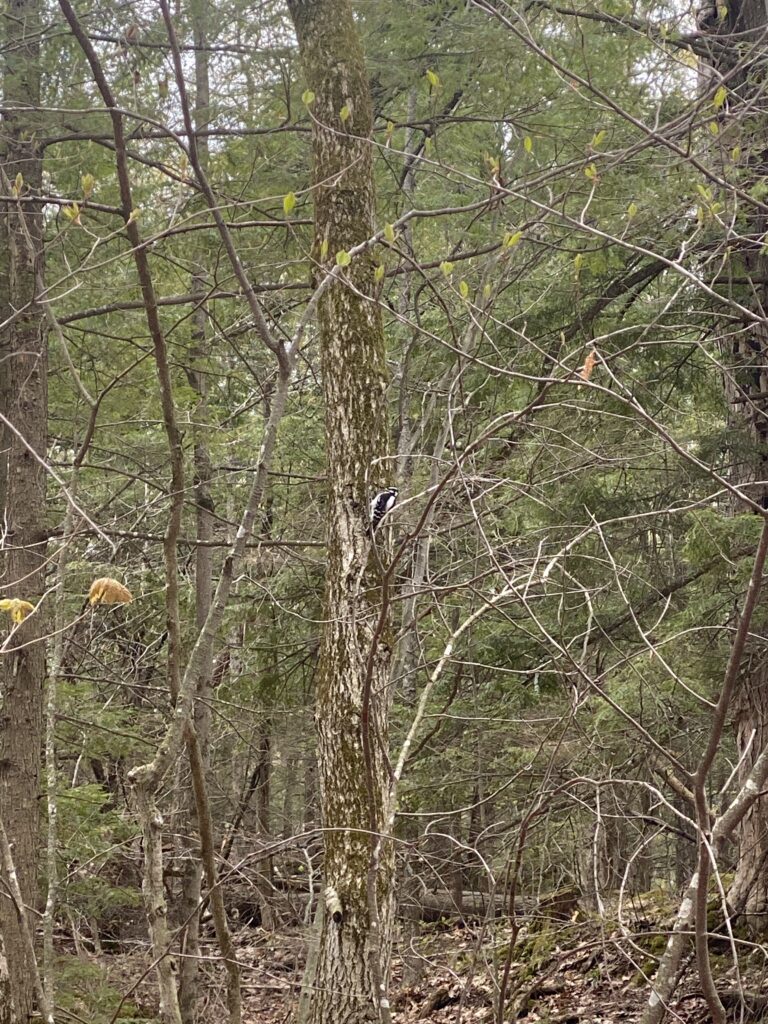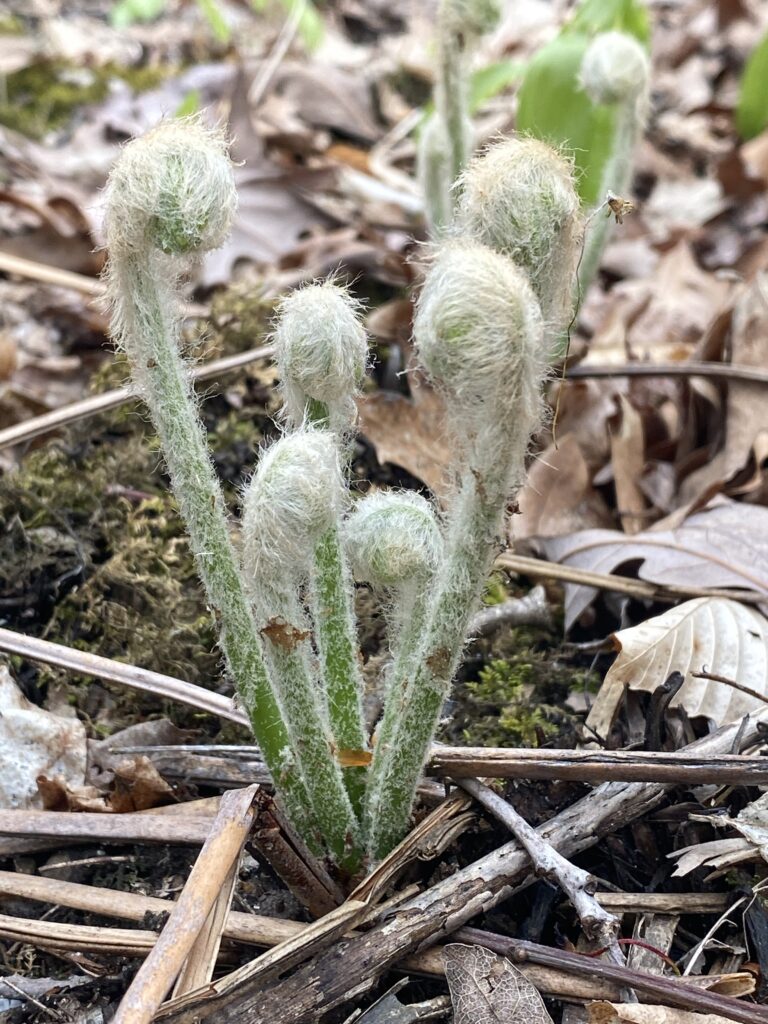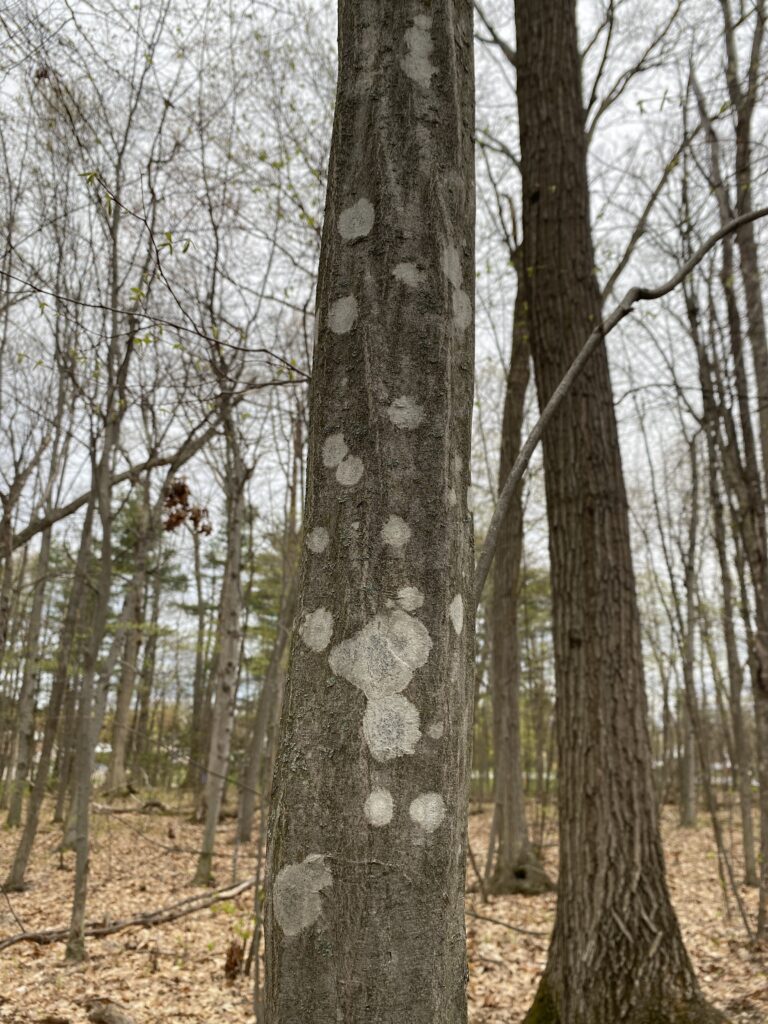I went out to Burlington’s Arms Forest last Monday afternoon, to see what species I could find before the City Nature Challenge came to a close. The highlight of my stroll came at the very beginning, as I was welcomed into the forest with the rapid, high-pitched call of the pileated woodpecker. I saw the grouse-sized bird searching for something on the forest floor from afar. I watched it hop around, picking at leaves and possibly looking for grubs, its striking red crown bobbing in and out of sight. I tried to get a closer look, but the pileated woodpecker flew off, parallel to the trail ahead, and just barely in sight.
I continued on and was quickly greeted by a similar but smaller bird, the hairy woodpecker. At that moment, I was fumbling with my phone, trying to get a half-decent picture of the pileated woodpecker, when this new specimen caught my eye. But, he left as quickly as he came, and I was lucky to get the photo of him that I did.

My mission then turned into getting a snapshot of the trickster pileated woodpecker, after I posted my shot of its decoy onto iNaturalist. I spotted it high up the trunk of what was probably an Eastern Hemlock, noticing the impressive stature of this particular bird. In trying to get a clear picture, I scared it off further into the woods. For the rest of my walk, the pileated woodpecker periodically mocked my amateur efforts with its distinct, echoing call. Fortunately, the flourishing of springtime shifted my focus to the fiddleheads popping up along the trail, the soon-to-be ripe skunk cabbage growing streamside, and a number of unique trees that populated this forest.




Though trying to take a good picture to post to iNaturalist had its difficulties, I appreciated the accuracy with which iNaturalist suggested species identifications. Taking part in this challenge also gave me a reminder of the appreciation I have for the worldwide community of wildlife enthusiasts, and it showed me just how easy it is for me to learn and get involved. It was also very cool to see the common plants and animals in other parts of the world, and how climate, geography, and time can create such beautiful variation on this planet.